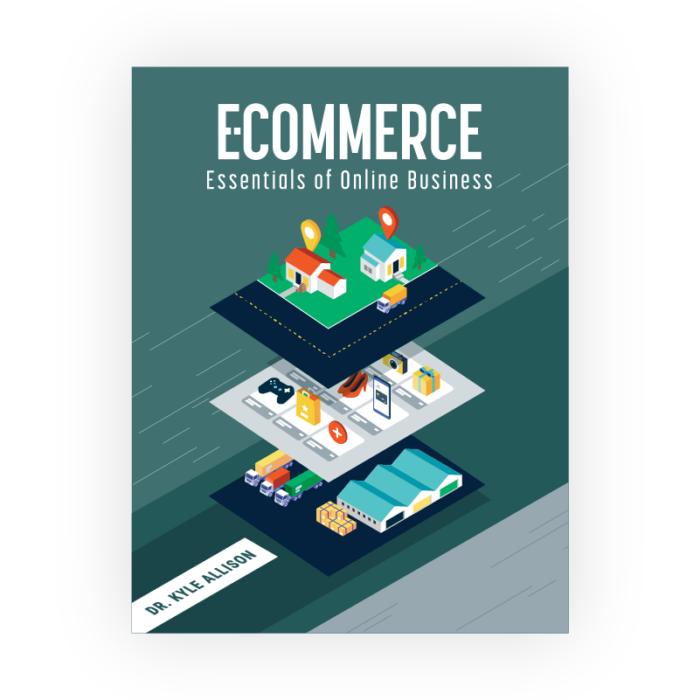The e-commerce industry is experiencing a fast transformation driven by new technologies and changing consumer values. For educators preparing students for entry-level positions in this dynamic field, understanding these trends is crucial. By integrating knowledge of these trends into your curriculum, you can ensure your students are well-equipped to enter the workforce. Here are five of the latest trends in e-commerce:
1. The AI Revolution
AI is dramatically reshaping e-commerce from the back end of supply chain logistics to the front end of customer interaction. AI-generated content is increasing, offering personalized shopping experiences and more engaging customer service through chatbots. Additionally, AI’s role in data analytics is becoming increasingly sophisticated, providing businesses with insights into consumer behavior and helping to forecast market trends.
For individuals entering the e-commerce industry, an understanding of AI’s capabilities, limitations, and strategic applications will be a significant asset. Those who can leverage AI to create compelling, personalized customer experiences will help drive their companies forward.
As an educator, you must ensure your students are not only aware of these AI trends, but also understand how to apply them in the real world. The use of AI in e-commerce can lead to better customer engagement, more efficient operations, and, ultimately, greater success in a competitive online marketplace. Preparing students with the skills and knowledge to harness AI effectively will be a key differentiator in their future careers.
To do this, you can engage students in projects where they use AI tools to do market analysis, customer segmentation, and personalized marketing campaigns. Case studies on AI-driven recommendation engines like those used by Amazon can illustrate the practical applications of AI in e-commerce. Additionally, debates on AI ethics, privacy, and the future of jobs can provide a holistic view of the technology’s impact.
2. Sustainable Practices as a Standard
Sustainable and ethical shopping practices are now a central focus for retailers. As of 2023, over 80% of shoppers want to see brands contributing to sustainability efforts, according to a Forbes article by Benjamin Crudo.
Teaching students about the importance of sustainable practices in e-commerce not only prepares them for emerging industry standards, but also gets them thinking about ethical considerations for their future business decisions. You can encourage students to explore case studies of companies that have successfully integrated sustainable practices. For example, you can highlight brands that use recycled materials in their products or have optimized their supply chains for reduced carbon emissions. You can also assign projects that challenge students to develop sustainability strategies for hypothetical or real businesses, considering factors such as sourcing, packaging, and logistics.
3. The Social Selling Phenomenon
Social media platforms are rapidly transforming into e-commerce hubs. With features like Instagram Checkout and Pinterest’s shoppable pins, these platforms are enabling direct-to-consumer sales that can bypass traditional online storefronts. For entry-level e-commerce professionals, understanding the mechanics and potential of social commerce is essential. The seamless integration of commerce into these platforms not only facilitates impulse purchases but also allows for deep data collection and customer insights.
One approach is to instruct students on the strategic use of social media platforms for e-commerce. You can demonstrate algorithms, advertising tools, and commerce features of platforms like Instagram and Facebook. To get students involved, use role-playing exercises to simulate the development and execution of a social commerce campaign, teaching them how to analyze metrics to gauge success. You can also encourage students to follow leading brands and observe their tactics in real time.
4. The New Payment Landscape
The payment options available through e-commerce platforms are diversifying rapidly. Beyond credit cards and PayPal, consumers now often expect to see options like Apple Pay, Google Wallet, and buy-now-pay-later services.
Digital and mobile wallets made up 49% of online transactions worldwide in 2021, with projections to increase to 53% by 2024, according to an article by PayPal. The ease of setting up and using these wallets, coupled with their real-time processing capabilities, makes them particularly appealing. According to the article, biometric authentication for digital wallets is also on the rise, enhancing security for consumers as they navigate complex international payment systems. Peer-to-peer platforms like Venmo continue to grow, with a substantial increase in total payment volume driven by a younger, tech-savvy demographic.
These flexible payment solutions cater to a broader audience and can enhance the customer experience by offering convenience and choice. Understanding this landscape is critical for those entering the e-commerce field as payment methods continue to evolve with technology and consumer preferences.
Tap into this trend by introducing students to the evolving world of e-commerce payments and discussing the impact of various payment methods on conversion rates and customer loyalty. You can also use case studies to illustrate how payment options can be tailored to different markets and demographics, or have students evaluate the risks and benefits of emerging payment technologies, such as cryptocurrencies and digital wallets, and their potential impact on global e-commerce.
5. Visual and Augmented Commerce
AR and VR are changing the way consumers interact with products online. By enabling customers to visualize products in their environment or see how they would look wearing certain items, these technologies address some of the traditional challenges of online shopping.
According to Threekit, the use of AR is expected to increase as it allows e-commerce businesses to offer a more interactive and confident buying experience. Professors should emphasize the importance of this technology in reducing returns and increasing customer satisfaction, key metrics in any e-commerce business.
Students should learn about the technological advancements in AR and VR and their applications in e-commerce. You can teach this by providing hands-on opportunities with AR and VR software to simulate the creation of a virtual showroom or other products. You can also ask students to consider the user experience and the technological infrastructure necessary to support visual commerce and discuss the limitations and future potential of these technologies.
Stukent’s “E-Commerce” Courseware
Stukent’s® “E-commerce” courseware, authored by Dr. Kyle Allison, is an authoritative educational tool designed to keep professors and their classes updated with current trends in the e-commerce field. This robust resource takes students from the basics to more complex concepts, covering various topics essential for understanding today’s e-commerce landscape. With a curriculum that includes e-commerce foundations, marketplace and competition, and digital marketing, educators have a comprehensive guide to aid them as they instruct the next generation of e-commerce professionals.
It is vital to prepare students for the realities of the e-commerce industry. By integrating sustainable practices, understanding the nuances of social selling, navigating the new payment landscape, and leveraging visual and augmented commerce, future professionals will be well-prepared for the challenges and opportunities that lie ahead.
To learn about Stukent’s first-in-the-world Simternships™ and courseware and to get FREE instructor access to Stukent materials, visit our website.







